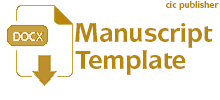| National Accreditation |
| Publisher |
In Collaboration
| In Partnership |
| ISSN |

| People |
| Editorial Team |
| Reviewers |
| Review for This Journal |
| Contact |
| Policies |
| Focus and Scope |
| Peer Review Process |
| Ethic and Malpractice Statement |
| Publication Frequency |
| Open Access Policy |
| Repository Policy |
| Screening for Plagiarism |
| Correction and Retraction |
| Copyright and Licensed |
| Indexing and Abstracting |
| Allegations of Misconduct |
| Generative AI Policy |
| Archiving Policy |
| Revenue Source |
| Advertising |
| Direct Marketing |
| Submission |
| Author Guidelines |
| Online Submission |
| Privacy Statement |
| Article Publication Charge |
| Manuscript Template |
| Recommended Tools |
| Journal Metrics |
| Acceptance Rate : | 31 % |
| Review Speed : | 40 days |
| Issue Per Year : | 4 |
| Number of Volumes : | 6 |
| Number of Issues : | 24 |
| Number of Articles : | 259 |
| No. of Google Citations : | 921 |
| Google h-index : | 15 |
| Google i10-index : | 28 |
| Abstract Views : | 31,571 |
| PDF Download : | 32,730 |
UPDATE: 20 November 2025
| Visitor |




.png)
.png)




